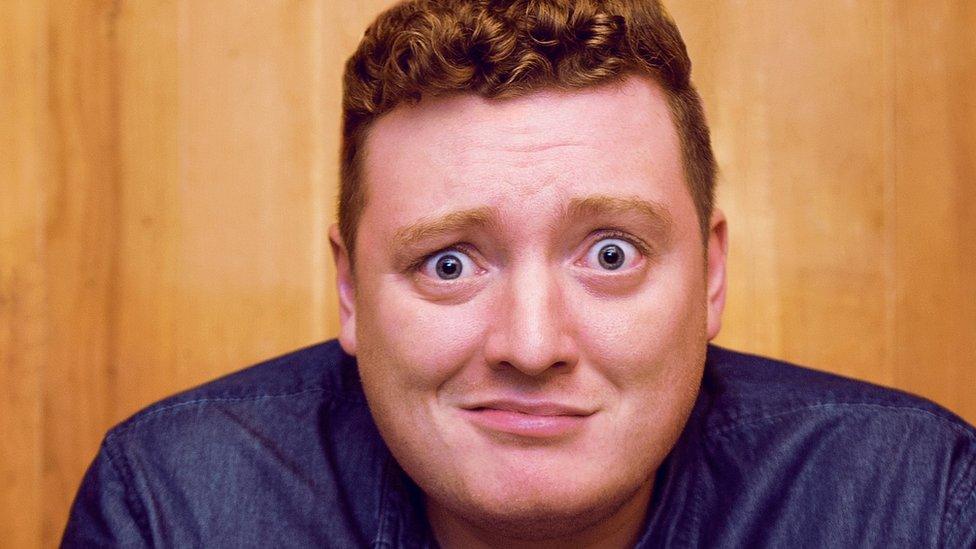Putting the fun back into dance classes
- Published

No Lights No Lycra sessions are kept deliberately dark
Annie Blatchford has just finished dancing with 50 strangers in the darkness of a hired church hall.
With the windows covered over to keep out the daylight, she could barely see her fellow dancers as they all got lost in the music at the alcohol-free gathering, in Melbourne, Australia.
Annie, 26, says she is normally too shy to dance in public, but that it is much easier to go for it when she knows that no-one is watching.
"There is no judgement, or need to feel uncomfortable," she says. "It was a great space to let loose."
Annie is one of thousands of people around the world who now meet regularly to dance together in near darkness (there is just enough light to prevent you from bumping into other participants), as part of a dance organisation called No Lights No Lycra.
It is part of a growing change in the world of dance classes for women, away from the formality of mirror-lined exercise studios, and pressures to get your moves correct and in time with everyone else.
Instead the emphasis is increasingly on unstructured fun, not taking yourself seriously, and the freedom to dance without any concern about how you look, or whether you should be losing any weight.
In addition to the success of No Lights No Lyrca, the movement has seen the rise of dance classes based solely upon the distinctive moves of US singer Beyonce, or the poses made by New York drag queens.
As the old saying goes, "dance like no-one is watching". That was what Melbourne friends Alice Glenn and Heidi Barrett, both 34, had in mind when they founded No Lights No Lycra in 2009.
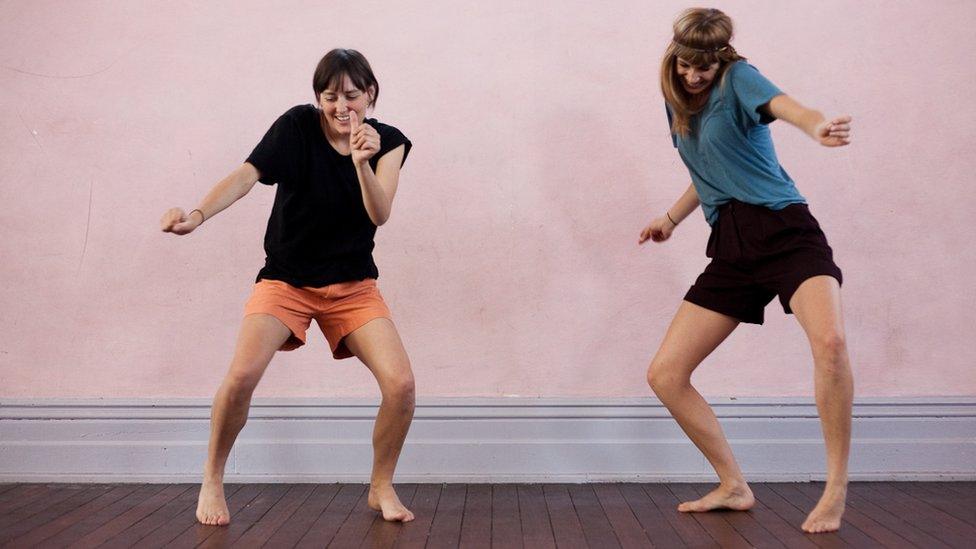
Alice Glenn and Heidi Barrett dancing with the lights on for a change
"We were just tired of going to dance classes and trying to move the way everyone else was moving, and constantly being critical of ourselves," says Alice.
"People want to enjoy that freedom of moving just because it feels good, not because you look great."
A 2013 report, external said the fitness industry needed to cater more for young people who had rejected the health clubs of their parents' generation in favour of exercise regimes that place an emphasis on music and community relationships.
That was another motivation, adds Alice, who says that participants don't have "to take themselves too seriously".
While just five people attended the first No Lights No Lyrca session in the fashionable Melbourne suburb of Fitzroy, within six months numbers hit 100 people a week.
"It all just went gangbusters," says Alice, especially after a friend started a franchise in Brooklyn that was covered in the New York Times.
No Lights No Lyrca now operates in 75 locations around the world, including Los Angeles and Hong Kong. Prices vary, although in Melbourne the cost-per-class is seven Australian dollars ($5.30; £4.30).
Franchises pay about 200 Australian dollars a year, plus a portion of their earnings for larger operations.
In Miami, Florida, Simone Sobers decided to launch a dance workout after she learned that women of colour had particularly high levels of obesity and heart disease.

Miami-based Simone Sobers (in red shoes) had a sell-out tour of her Boss Chick workout
"I wanted to use elements of our culture that we could easily connect with - music and dance," she says.
Simone's Boss Chick Dance Workout is a combination of styles - hip-hop, dance hall, afrobeat, and twerking. Classes are for women only, so that they can "let loose without the male gaze, and have a safe space to dance in a sexy way".
With just $100 in the bank, Simone started the classes back in 2013. It has now expanded to New York and Philadelphia, with classes costing between $14 and $25. She event staged a sold-out 21-city tour across the US.
Back in Melbourne, Liz Cahalan's company Bey Dance is devoted almost entirely to the spirit of the singer Beyonce.
A dancer by profession, Liz says she was inspired by her love of the music video for Beyonce's 2008 hit single Single Ladies.
The first Bey Dance studio opened last year in the Australian city, and has since expanded across the country to Perth and Adelaide.
Liz now employs 35 people to help teach the classes and maintain the business.
"It became about more than just a dance class," she says. "It became about teaching women that it is OK to have curves, to feel powerful about the way that you stand with your body."
Liz adds that she thinks the rise of classes such as Bey Dance and No Lights No Lycra was "one of those zeitgeist things". She says like-minded people became tired of feeling like they "couldn't dance because we weren't a certain body shape, that we didn't have a certain technique, or do ballet".
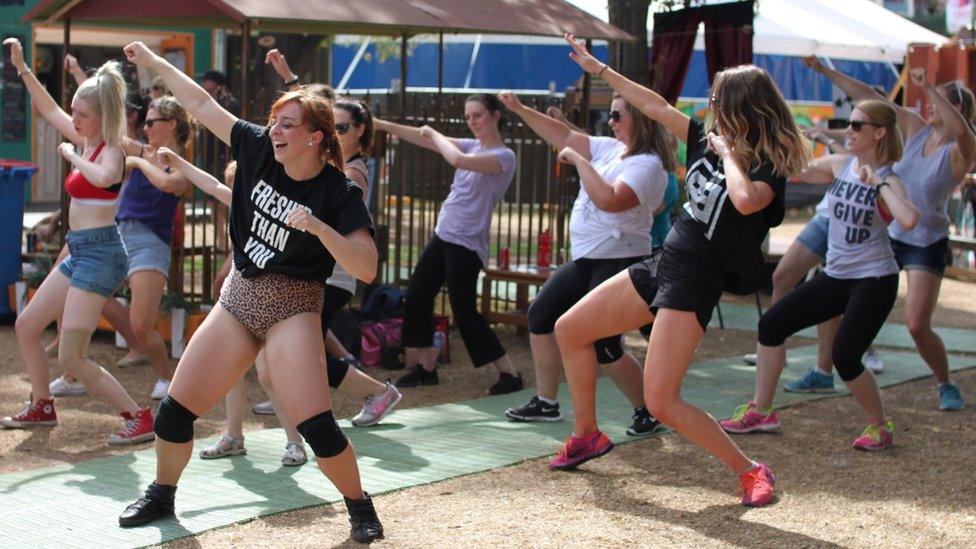
Beydance's classes are a bit with Beyonce fans
In London, Juliet Murrell got inspiration for her House of Voga dance classes from a 1980 documentary called Paris Is Burning that chronicled New York's drag scene.
The film showcased the "vogueing" style of dance popular with drag queens at the time, which involves brief pauses in movement to pose, as if for a camera.
Juliet's classes, which launched in 2013 combine vogueing moves with yoga.
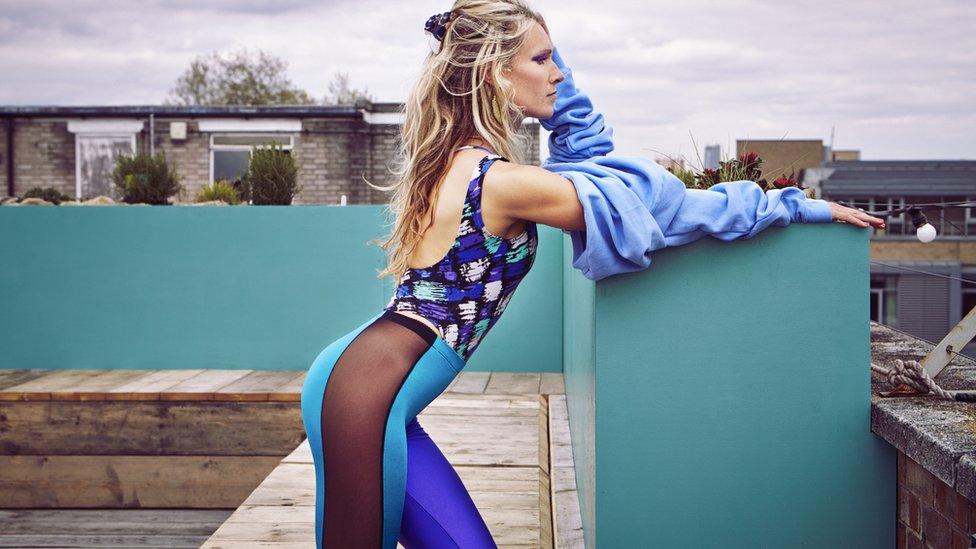
Juliet Murrell's dance sessions are inspired by a 1980 documentary
"There's a focus on arm, gesture, body language and coordinated arm movements," she says of the classes, which have now expanded to Paris, Edinburgh and Barcelona.
"There's an increasing appetite for unique dance classes as people want to feel they're upping their skills and feeling great," adds Juliet. "It's exciting, it is like nothing they've done before."

Follow Business Brain series editor Will Smale on Twitter @WillSmale1, external
- Published15 June 2017
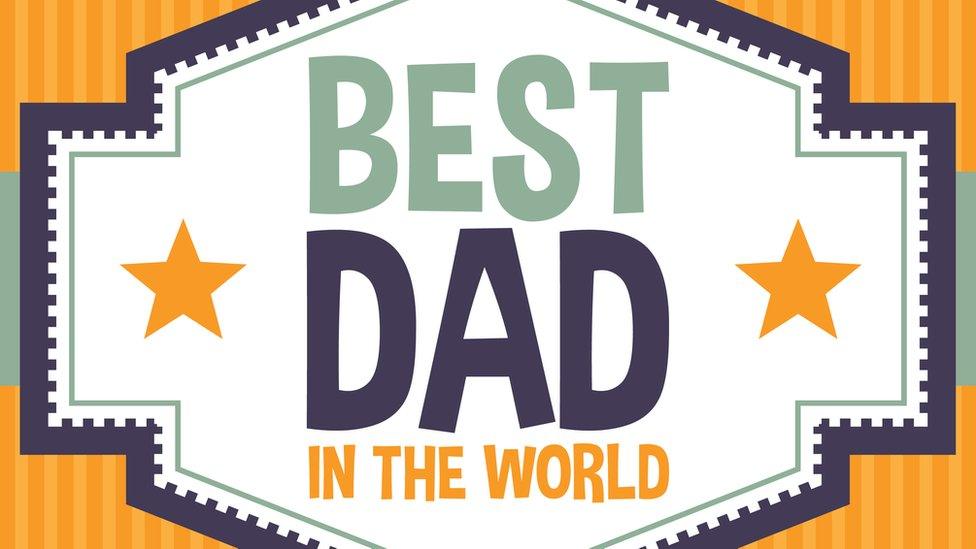
- Published7 June 2017

- Published1 June 2017

- Published1 June 2017
